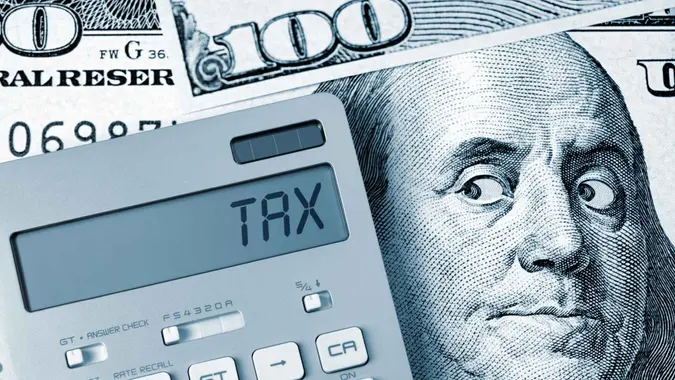What Is the Maximum Taxable Income for Social Security for 2023?

Commitment to Our Readers
GOBankingRates' editorial team is committed to bringing you unbiased reviews and information. We use data-driven methodologies to evaluate financial products and services - our reviews and ratings are not influenced by advertisers. You can read more about our editorial guidelines and our products and services review methodology.

20 Years
Helping You Live Richer

Reviewed
by Experts

Trusted by
Millions of Readers
As a worker, there’s a limit on the amount of your earnings that are taxed by Social Security. This is known as maximum taxable earnings, which shifts on a yearly basis in line with changes in the national average wage index. For 2022, that amount is $147,000, but the Social Security Administration (SSA) has suggested several provisions that could modify that amount in 2023.
The OASDI tax rate for wages paid in 2022 is currently set at 6.2% for employees and employers, each. For self-employed workers, the rate is 12.4%. According to the SSA, a worker with wages equal to or larger than $147,000 would contribute $9,114.00 to the OASDI program in 2022, and his or her employer would contribute the same amount. If the worker is self-employed, they would contribute the full amount of $18,228.
For 2023, the SSA has provisions that could either modify the current OASDI payroll tax rate of 12.4% or the taxable maximum. CNBC reported that a recent congressional proposal aims to apply the payroll tax on wages of $400,000 and up to help address Social Security’s solvency problem. This means that earnings up to $147,000 would still be taxed, but would not be applied again until wages reached $400,000.
Two other suggested provision aims to apply the OASDI 12.4% payroll tax rate on earnings above $250,000 or $300,000 starting in 2023, which would tax all earnings once the taxable maximum exceeds $250,000 or $300,000.
According to the SSA, other provisions — grouped into broad categories of action — potentially include, but are not limited to:
- Increasing the payroll tax rate, with no changes in the taxable maximum. Example: “Increase the payroll tax rate (currently 12.4 percent) by 0.1 percentage point each year from 2027-2046, until the rate reaches 14.4 percent in 2046 and later,” per the SSA.
- Taxing all earnings above the current-law taxable maximum. Example: “Eliminate the taxable maximum in years 2022 and later, and apply full 12.4 percent payroll tax rate to all earnings. Provide benefit credit for earnings above the current-law taxable maximum,” per the SSA.
- Taxing a portion of earnings above the current-law taxable maximum. Example: “Increase the taxable maximum such that 90 percent of earnings would be subject to the payroll tax (phased in 2022-2031). Provide benefit credit for earnings up to the revised taxable maximum,” per the SSA.
 Written by
Written by  Edited by
Edited by 

























